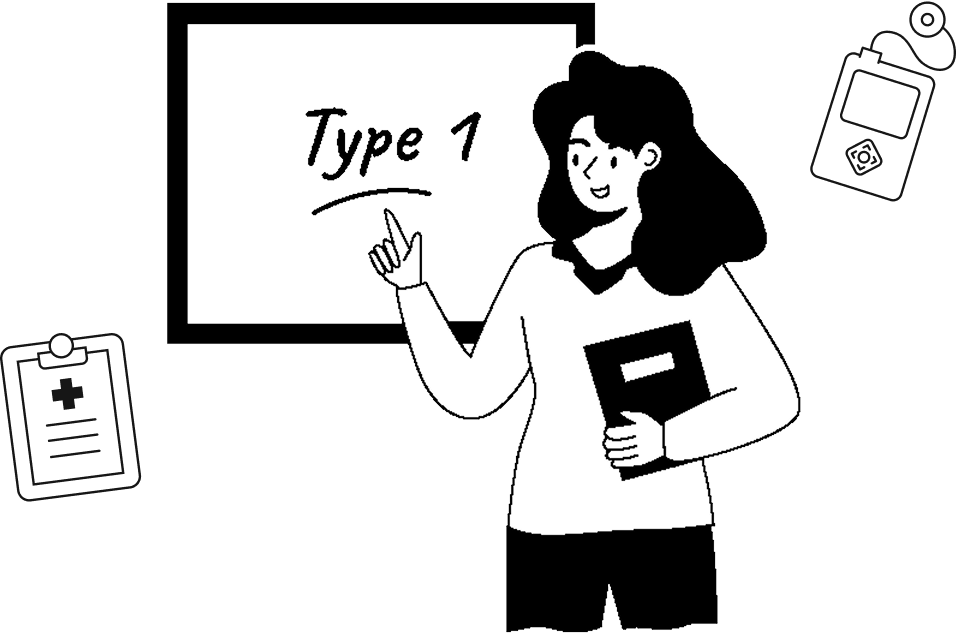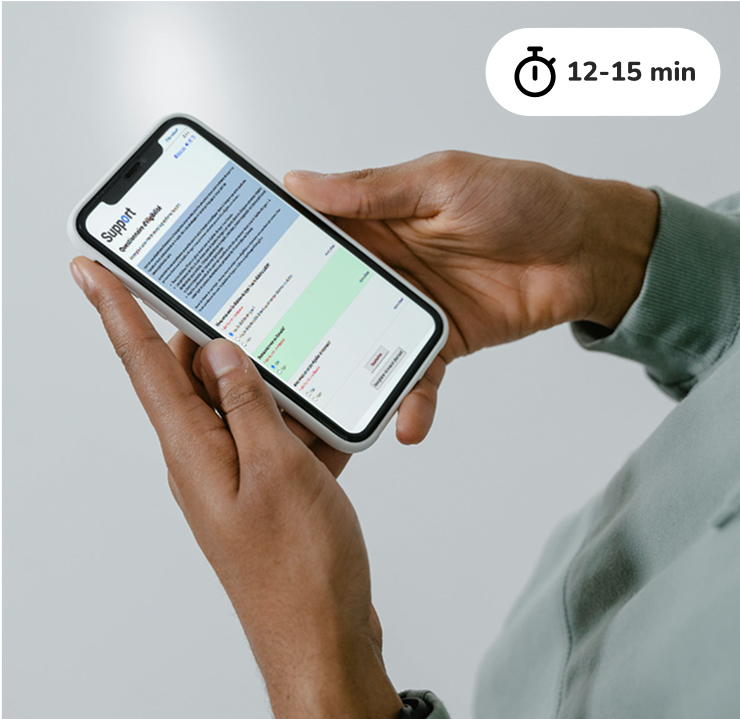If you live with type 1 diabetes, you know this situation all too well: blood sugar check, too high, panic rising. “It has got to go down!”
Welcome to what we call “rage bolusing.” Simply put, it describes the irresistible urge to inject rapid-acting insulin to immediately correct hyperglycemia.
It manifests in a few different ways, including:
- Injecting more insulin than needed, without calculations;
- Injecting multiple doses in a short amount of time, even though the previous dose is still active.
This is a natural reaction; however, it’s important to remember that injecting more insulin doesn’t lower blood sugar faster.
This article explores the risks associated with “rage boluses” and suggests some tips to better avoid them.
Risks associated with rage boluses
Impulsively injecting insulin to correct hyperglycemia can provoke one of the following situations:
- Hypoglycemia. Too much insulin or insulin stacking can bring your blood sugar too low, turning the initial hyperglycemia into hypoglycemia that you now have to deal with. Always carry with you a treatment for hypoglycemia (e.g., glucose tablets) and follow a clear plan (e.g., quantity, when to check blood sugar again).
- Blood sugar rollercoaster. To treat hypoglycemia caused by taking too much insulin, you need to ingest carbs. And in an attempt to raise your blood sugar quickly, often, you might ingest too many carbs … which brings you back into hyperglycemia and triggers a physically and mentally exhausting cycle of ups and downs.
- Stress and frustration. Watching your blood sugar fluctuate and not being able to stabilize it can bring about feelings of guilt and anxiety that might lead you to taking more insulin, creating a vicious cycle that is hard to break.
- Impact on daily life. Sports, work, going out … any activity hampered by hyperglycemia can become risky if your blood sugar drops than rises again too quickly due to impulsive injections.
These risks show that the goal is not to correct hyperglycemia as quickly as possible, but, rather, to correct it using method and reflection. Some strategies can help avoid impulsive boluses on the daily.
How to avoid rage bolusing
Good news! It may seem difficult to avoid these reactions, but there are strategies that can help you stay calm and make a sound decision.
- Think, then act. Take a deep breath, and check your blood sugar and trend arrows (if you use a continuous glucose monitor [CGM]). Then, check for a recent dose of rapid-acting insulin. Taking this time will help you decide more calmly.
- Look at active insulin. Most types of rapid-acting insulin have an action duration of four hours. Taking into account the active insulin can help reduce the risk of overbolusing.
- Use your correction factor. The correction factor indicates by how much your blood sugar drops with one insulin unit; it is established by your healthcare team. It is best to use it in your calculations for a more accurate dose, rather than bolusing randomly and fall into the vicious cycle of repeating injections.
- Relax. Stress alone can raise your blood sugar … try and take a walk, read or listen to music. Taking care of your mental health is a concrete way to stabilize your blood sugar levels.
- Don’t bottle it up. Sharing how you feel with a trusted friend can help you to avoid acting impulsively.
Breaking the cycle
Other strategies can help you reduce rage bolus episodes over the long term.
- Look for the culprit(s). Write down your insulin doses, meals, activities and stress levels to better understand what causes hyperglycemia and identify situations where you are most likely to bolus impulsively.
- Expect the imperfect. Not every day will be perfect, and out of range blood sugar levels will happen. Still, it is important to avoid the rage bolus-hypoglycemia-overcompensating cycle and to focus on making informed decisions rather than impulsive ones.
- Identify and address the root cause. If you find yourself constantly in hyperglycemia at the same time of day (e.g., after lunch), it may be more efficient to readjust the associated insulin dose (in this particular case, the lunchtime dose). This way, you’re addressing the cause as well as the symptoms. (To take it a step further, see our practical module on the Support platform to learn how to safely adjust your insulin doses yourself.)
- Talk to your healthcare team. They can help you adjust your insulin doses and implement strategies so you can avoid riding the grueling blood sugar rollercoaster again and again.
Find out more
The Support platform can help you with the daily management of type 1 diabetes, offering reliable resources, answers to your questions, and a discussion forum for people with type 1 diabetes. All adults who live with type 1 diabetes in Canada and health professionals are welcome to create a free account and enjoy the platform to its fullest.
All experiences matter: to that end, the BETTER registry collects testimonials from people who live with type 1 diabetes in Canada. You are welcome to share either your or your child’s lived experience to help advance research. Once registered, you’ll also have access to our webinars and have the opportunity to dive deeper into many aspects of type 1 diabetes.
Written by: Sarah Haag, Clinical Nurse, B.Sc.
Reviewed by:
- Rémi Rabasa-Lhoret, MD, Ph.D.
- Anne-Sophie Brazeau, P.Dt., Ph.D.
- Amélie Roy-Fleming, RD, CDE, M.Sc.
- Jacques Pelletier, Claude Laforest, Michel Dostie, patient partners of the BETTER project.





